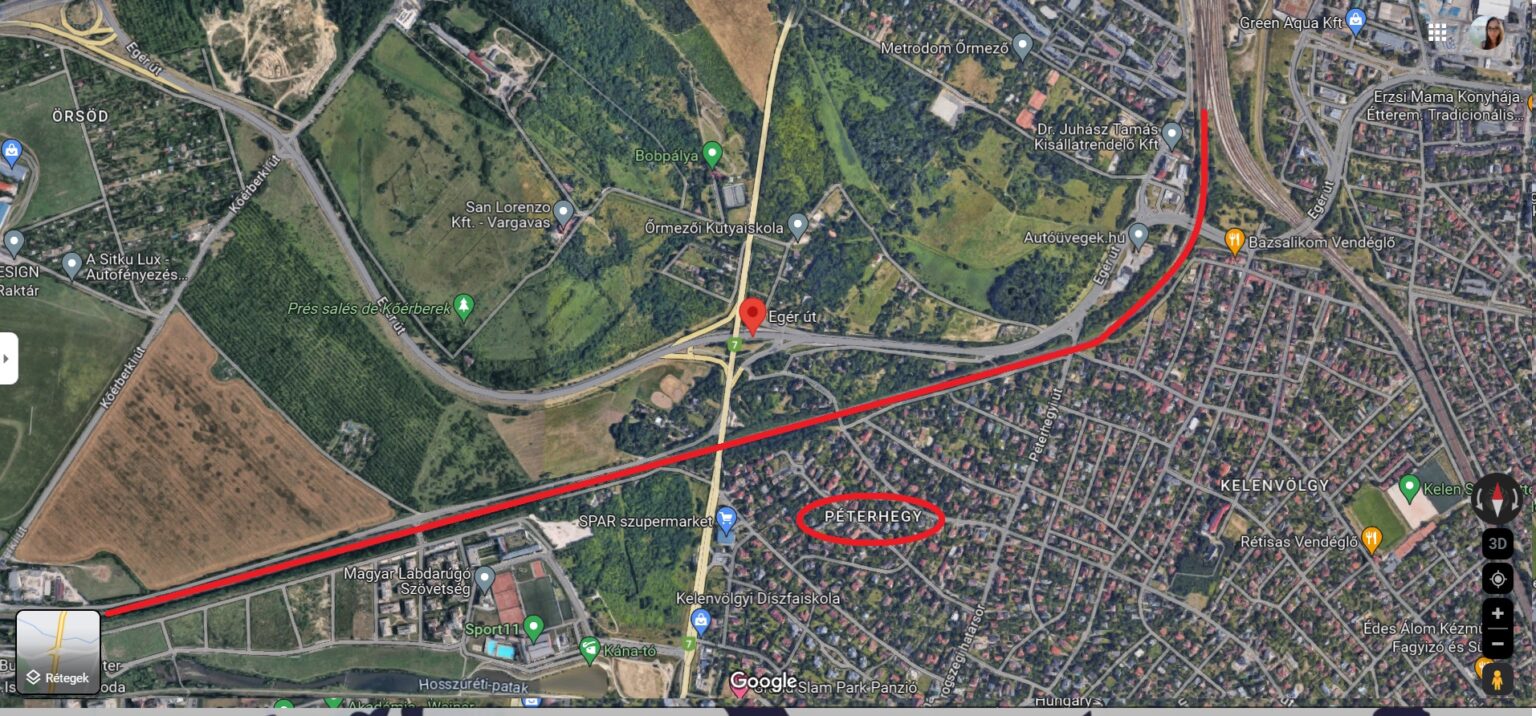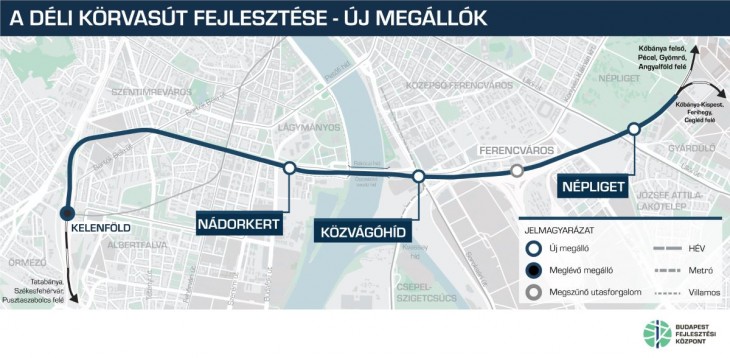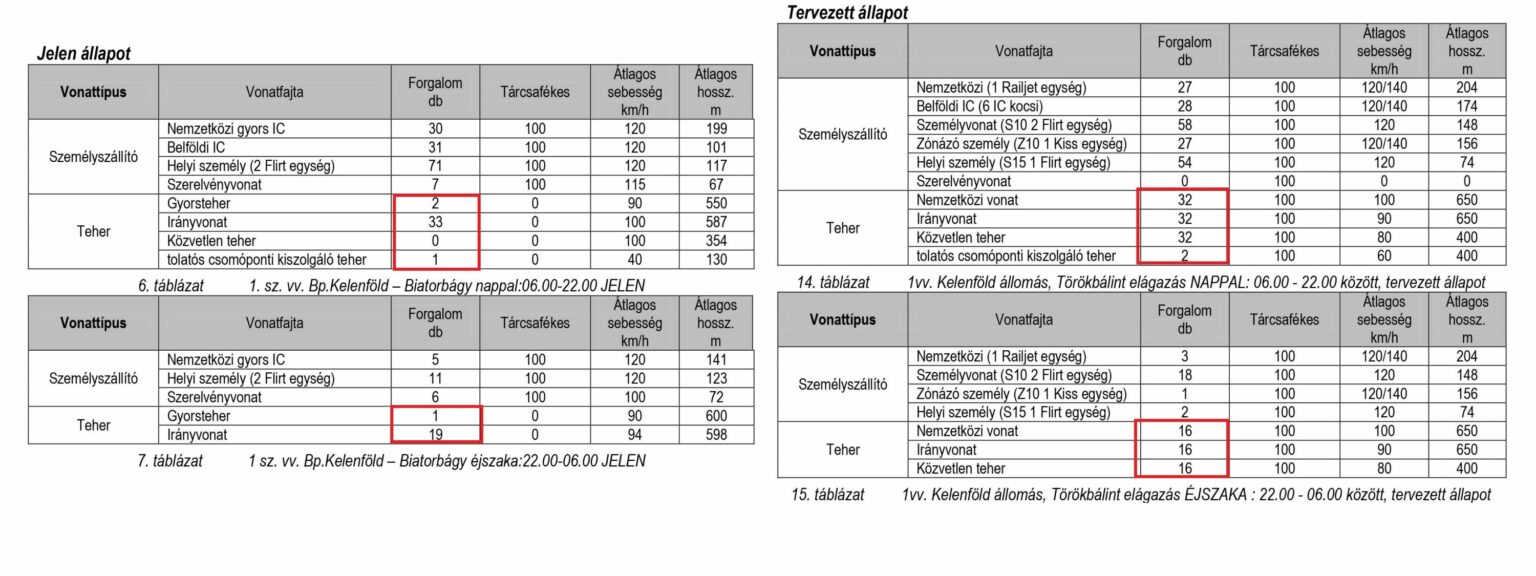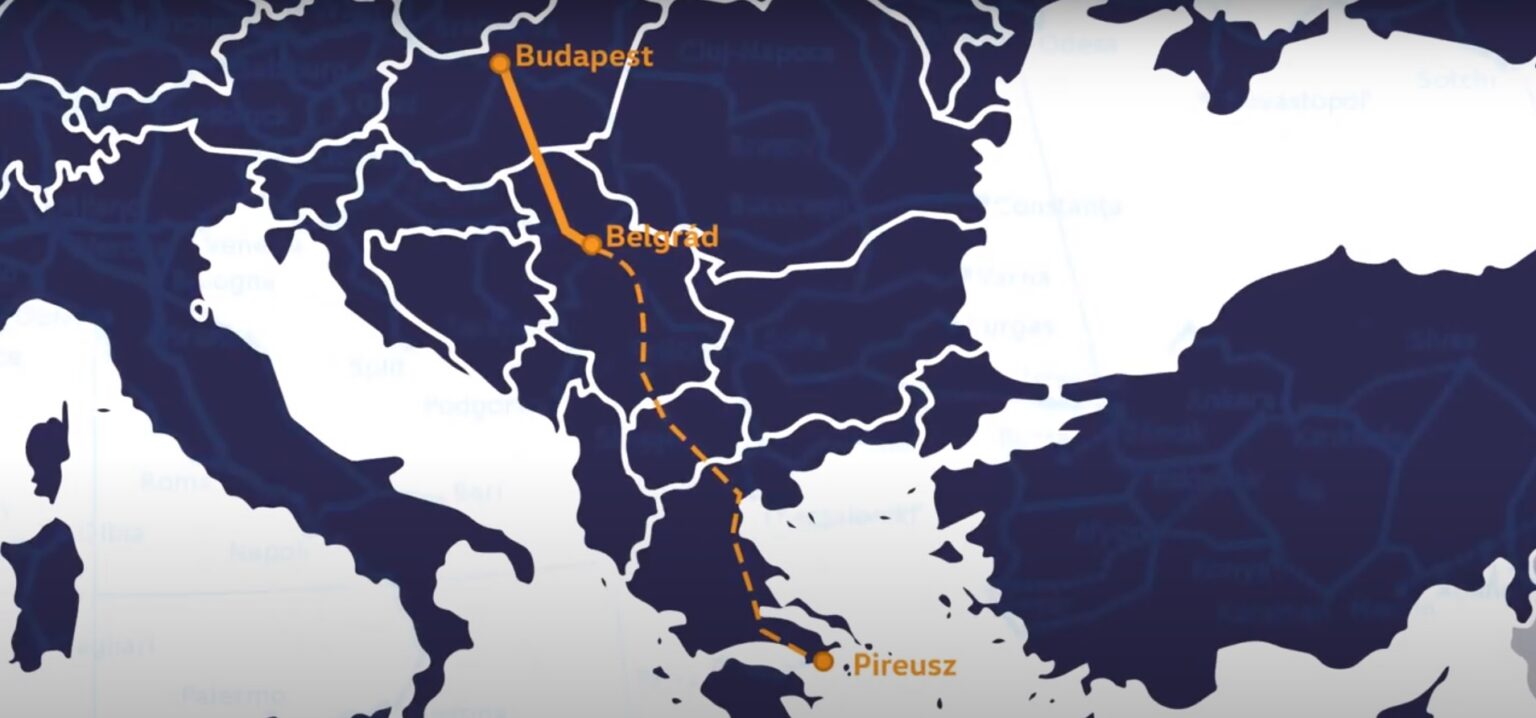The https://english.atlatszo.hu use cookies to track and profile customers such as action tags and pixel tracking on our website to assist our marketing. On our website we use technical, analytical, marketing and preference cookies. These are necessary for our site to work properly and to give us inforamation about how our site is used. See Cookies Policy
Train project receives environmental permit, set to fell hundreds of trees
It was a gross oversight by the animators of Thomas the Tank Engine to not address the disruption caused by trains in residential areas. Alas, the residents of the areas around the Kelenföld-Törökbálint railway investment will find out soon.
A planned investment between Kelenföld and Törökbálint, set to happen between 2025 and 2027, would double the number of tracks passing near residential buildings from two to four. The official justification for the extension: to increase the number of passenger trains. The reality: a shocking increase in freight traffic. Specifically, the Budapest-Belgrade line will serve freight traffic from China.

“We have said many times, in many places, that the final destination of the increased freight traffic from China due to the Budapest-Belgrade extension is not Budapest, but Western Europe,” wrote Máté Kreitler-Sas, LMP’s representative in Újbuda. “This also means that the Ferencváros-Kelenföld track extension will be extended towards Budaörs.”
The aim of the 10-kilometer extension, which involves felling trees, is “to make rail a more competitive alternative to congested roads for access from the western agglomeration to the capital,” wrote the National Transport Center.
The development may invoke a sense of deja-vu. Like the railway development project in and around Hamzsabégi promenade in Újbuda, the planned extension of the Southern Circular Railway from Ferencváros to Kelenföld, across the Danube, has also led to large-scale public protests.
The residents living in the area didn’t object to the development itself – their discontent was fuelled, instead, by the feeling of being duped. For years, the project had been sold beneath a facade of improving suburban transport. Deputy State Secretary of the Ministry of Transport and Communications Artur Kikina told Világgazdaság that the Southern Circular Railway project will solve the bottleneck between Kelenföld and Törökbálint.
The significant increase in freight traffic was somehow left off the billboards.
Vitézy knows sedition when he sees it
Similarly, affected residents were not overloaded with information about the Kelenföld-Törökbálint project.
The project was labelled a priority for the national economy, and the Pest County Government Office granted the environmental permit in August. When the public hearing was held on August 22, there were no dissenting comments from the public.
This could have been because the public did not have any qualms — but, more likely still, it was because the public wasn’t actually informed of the project yet.
Breaking news — the Kelenföld-Törökbálint residents are not clairvoyant. Thanks, Brussels.
Kreitler-Sas said hundreds of trees would be felled along the railway line, and the track widening would take place directly next to residential houses in one stretch, while there could also be land expropriations in the countryside.
And while the investment was justified by the expansion of passenger transport, no stops were added between Kelenföld and Budaörs, even though the area next to Tóváros is crying out for one.
Passengers should probably hit the gym soon to train for jumping on and off the moving cars.
According to former CEO of the Budapest Development Centre Dávid Vitézy, involved in the run-up to the project, there was no obfuscation. After all, as with any important announcement, he had posted about the development on Facebook in 2020.
It is no surprise, therefore, that Vitézy was shocked and dismayed – nay, appalled and aghast – at the sudden uprising. Shrewd as he is, he saw right through the ruse.
“This new anti-rail incitement on the official side of the district and the repeated deliberate deception of the lay public to prevent rail development is completely incomprehensible,” he blustered. “The planning of the railway capacity expansion project between Kelenföld and Budaörs started in 2020, I posted about it in the official NIF press release, the whole press was dealing with it, and the leaders of Újbuda (Imre László, Mayor of Újbuda, and Zita Bakai-Nagy, Deputy Mayor) were constantly involved in the planning discussions, in the development of the technical content, and I remember several such presentations, where they and I were personally present. What kind of secret planning are we talking about?” – reads his post.
He was understandably too incensed to edit the run-on sentences.
Colossal increase in freight traffic
The four-track reconstruction of the line will enable the separation of long-distance, suburban and freight traffic. The project will affect the administrative areas of Újbuda, Budaörs and Törökbálint. Budaörs will get a new stop in the vicinity of the Sport Street road flyover, called Budaörs-Szilvás.
The environmental impact assessment also cites passenger transport as a justification for the investment: “The main objective of the project is to relieve the overload on the main railway line 1; to increase suburban supply in the short-term in line with the Budapest Agglomeration Rail Strategy; and to improve long-distance connections in the long run. To this end, it will be necessary to build tracks 3 and 4 in the stretch in question.”
The brutal increase in rail traffic is illustrated by the tables in the document showing current and projected traffic. They clearly show the dominance of freight traffic on line 1 — night-time freight traffic would increase by almost two and a half times.
The table shows that the total traffic (passenger and freight) would increase from 217 to 364 trains per day — a 67% increase. The number of passenger trains would only increase by 35% from 161 to 218 per day, while the number of freight trains would more than double, from 56 to 146. Night-time freight traffic would increase significantly rom 20 to 48 trains, while the daytime jump goes from 36 to 98.
Hungarian environmental impact assessments read more like fiction – perhaps fantasy? – than non-fiction. The problem is that they are commissioned by the investor. Smells like conflict of interest.
UNITEF is preparing the environmental impact assessment for the extension of the Kelenföld-Törökbálint stretch – EU-funded, for a fee of HUF705 million. This also covered the preparation of the permit and tender documents and the necessary environmental and cost-benefit analyses.
Noise surpasses the limit, hectares of forest also affected
The limit for the railway line under consideration is 65 decibels (dB) during the day and 55 dB at night. According to the environmental impact assessment, noise levels at night are already above the 55-decibel limit.
As a solution, the developers have planned 3.5 – 5 meter-high noise barriers for approximately 5,580 meters in the 11th district of Budapest, along with Budaörs and Törökbálint. In Újbuda, residential buildings in Kelenvölgy and Péterhegy will also be affected.

The railway will affect Kelenvölgy and Péterhegy in the 11th district, and the increased noise would be reduced by noise barriers (Source: Atlatszo edit based on Google maps)
The noise levels calculated at the test points are given in the table. According to the table, thanks to the noise barrier, there will be areas where noise levels are reduced, but in many areas, the noise level will stagnate.
The project will also touch upon approximately 20 hectares of permanent vegetation and will affect around 2.3 hectares of forest area listed in the National Land Registry.
The project will affect around 220 square meters of the National Ecological Network, and while it leaves protected habitats and plant species untouched, it will impact the breeding sites of protected songbirds.
Újbuda torpedoed the extension of the Southern Circular Railway
In a rare success for public demands, the Southern Circular Railway project has been stalled by protests from Újbuda residents. In a less-than-rare covert retaliation move, the government decided in June to confirm the Southern Circular Railway project in a secret decision after the Metropolitan Court annulled the environmental permit twice since January.
Even less rare was that the construction of the Southern Circular Railway was won by Lőrinc Mészáros’ railway construction company, V-Híd Zrt., with a net bid of HUF338 billion. The gigantic project would involve the construction of around 13 kilometers of train tracks in total. Up will spring six new railway bridges, two new stations, and a monumental noise barrier. Dávid Vitézy reported that the European Commission had published the results of the 2022 calls for proposals for the CEF funds it directly allocates for the development of trans-European transport networks. “Most importantly, although the Southern Circular Railway did not win due to the annulment of its environmental permit, the EU has reserved a significant part of the funds for Hungary in a rather unusual move,” said Vitézy – a gracious acceptance of the EU’s money. The move will allow the Hungarian government to reapply, said his post.
The biggest achievement so far in the project is the renovation of the Danube bridge connecting the southern railway line for a net HUF36.3 billion. One of the three tracks on the bridge goes nowhere. Of this amount, HUF30.4 billion is EU funding.
The renovation was carried out by László Szíjj’s Duna Aszfalt, who supplies yachts to politicians willy-nilly in his off-time, and one of the subcontractors was a Lőrinc Mészáros-owned company. Then again, it must be asked – would it even be a Hungarian development project without these fan favorites around for some good old-fashioned subcontracting shenanigans?
The third track of the bridge, currently unusable, is set to be connected to the Southern Circular Railway. If the extension of the Southern Circular Railway is not realized due to the residential protests, the EU funding for the bridge will be in jeopardy.
Uncertainties surrounding the Budapest-Belgrade giga-project
The expected increase in freight traffic on the line is in part due to the Budapest-Belgrade giga-project. The renovation of the railway line between Budapest and Belgrade, which will run to Ferencváros, will be the fastest transport route for Chinese goods between southeastern and western Europe.
Exciting times ahead – the government has ambitions to make Hungary the freight, logistics and distribution hub of Central Europe.
According to the original contract, the Budapest-Belgrade railway line will be built by RM International Zrt., a consortium of two Chinese companies connected to Lőrinc Mészáros, and the track construction will be carried out by V-Híd – also owned by Mészáros – as a subcontractor. Telex reported that the Mészáros family had partially withdrawn from the HUF2 billion project, because they had to send machinery and workers to renovate the dilapidated Budapest-Győr main line.
Multitasking is admirable, but one must ensure they do not overextend themselves – for mental health purposes, if nothing else.
According to VSquare, the Chinese have also stopped working on the project, and they pressed pause on its financing. It appears that the Chinese company working on the Budapest-Belgrade line struggled to build the safety and train control systems to the necessary European standards. The project, 85% financed by Chinese loans and 15% by Hungarian state money, would be deeply affected. János Lázár’s ministry denied the stoppage to Világgazdaság.
In the meantime, the MÁV mess becomes increasingly apparent – another section of the main rail line 1 – one of Hungary’s most important railway lines – has been left to rot. János Lázár ordered MÁV to take immediate action in August. “If we don’t act immediately, we will have to close the line, which would have unforeseeable consequences for passenger and freight transport,” the minister said.
As per advice from WikiHow on how to get things done, we recommend that those involved in the urgent action resist distractions, drink lots of water, and reward themselves for a job well done. But — “Be honest with yourself,” warns WikiHow. “If you do not complete the task, do not reward yourself.”
Translated by Vanda Mayer. The original, Hungarian version of this story was written by Szilvia Zsilák and can be found here.




